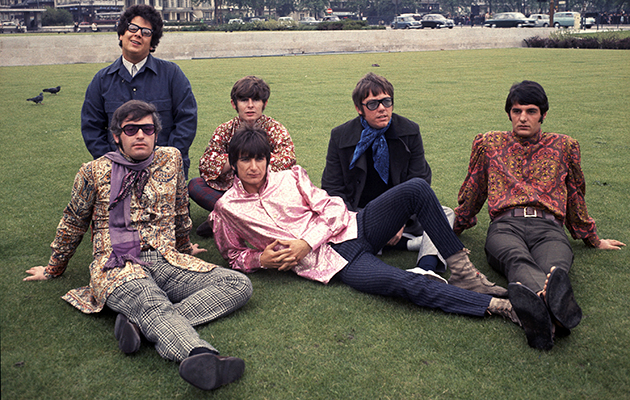KAYLAN: We weren’t just playing for the kids anymore, now we were playing for the kids and their parents, and it made a big, big difference, because we wanted the parents to like us. We weren’t a threatening mod-looking group, we were the antithesis of the slender British mod bands that they had seen on The Ed Sullivan Show every single week since The Beatles debuted. But when we went on The Ed Sullivan Show, we acted stupid, we acted comedic, and it worked, especially with Mark Volman’s ridiculous hair and glasses that gave us a look. Onstage he held other instruments –a cello, or a French horn, or another instrument that he couldn’t play at all – and everybody waited for him to play it, and of course he never did. And he would razz me during the song. It was a challenge, we knew we were on live TV, we were trying to crack each other up. But we felt more comfortable on television than we felt off. I still feel that way.
BARBATA: When I met Paul McCartney later, he remembered that “Penny Lane” had been No 1 for one week in America, and that we knocked them outta there, and then “Happy Together” was No 1 for like eight weeks.
KAYLAN: I don’t think The Beatles were very happy about it. We were so pleased to meet them – competition was not ever something that we were leaning toward – we never thought about it like that. Jim Tucker, the rhythm player, though, quit the band after an encounter with John Lennon, who had called him all sorts of names, and he never played music again. I just spoke to him the other day, he’s a retired farmer in Grass Valley, California.
BARBATA: Paul wasn’t mad about “Penny Lane”, though, he was cool. The first time I met them was in London, at the Speakeasy, I was sitting between Ringo and John, and McCartney was at the bar having a drink with Graham Nash. Rod Stewart was there, and Clapton, Hendrix, Eric Burdon – it was quite a club.
KAYLAN: “Happy Together” opened every door there was for us, but we knew that if we didn’t have a follow-up, we’d be just another one of those bands – we would’ve been a four-hit wonder, but still, you go away very quickly and people forget. So we searched and searched for the follow-up record, and when “She’d Rather Be With Me” came to us from the same authors that had penned “Happy Together”, we were kind of distraught, because it was such a 1920s razzmatazz kind of a song compared to this mysterious and glorious record we had just put out. It was like following up “Good Vibrations” with “Barbara Ann”. I can’t explain it, but it got higher on the charts than “Happy Together” did, and on the strength of that record, that was the first time we went over to England at all, and I had some of the adventures that I chronicle in the movie My Dinner With Jimi, with Hendrix and The Beatles.
VOLMAN: The record company held a lot of power over us. Even though they were a small record company, they attempted to shape our career in the way that they saw it, not the way we saw it, so there was a constant bickering about what to record.
KAYLAN: The label weren’t content with having only Top 10 hits, they wanted No 1 hits. You gotta remember this is the smallest record company in the universe, run by the two men I believe to be the crookedest to ever walk the planet. But nonetheless they were our bosses contractually, and they kept yelling, no matter what we put out, for another “Happy Together”. So after “She’d Rather Be With Me”, we had a string of hits in the United States that went on for years, and then there was a period where it kind of quieted down for a little bit and they started freaking out.



